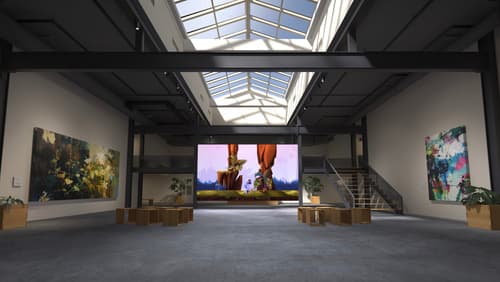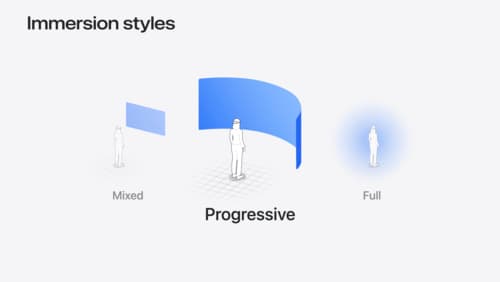Best practices for building a volumetric app
Asked on 2024-07-31
1 search
To build a successful volumetric app, here are some best practices based on the content presented at WWDC:
-
Utilize the New Baseplate: When creating a new volumetric app or linking an existing app against the VisionOS 2 SDK, the new baseplate appears automatically when looked at, highlighting the bottom edges of the volume. This helps guide users to the edges of the volume, enhancing spatial awareness (Dive deep into volumes and immersive spaces).
-
Optimize 3D Assets: Consider how your content will be viewed. Whether it will be an immersive app with lots of assets or a volume in your space, optimizing your materials, shaders, and texture memory is crucial. Efficient use of these resources ensures better performance and visual quality (Optimize your 3D assets for spatial computing).
-
Dynamic Scaling: For volumetric apps that rely on dense content with many interactive areas, dynamic scaling can be beneficial. Use the new scene modifier called
defaultWorldScalingBehaviorto make the volume dynamically scale, which helps in visualizing virtual content as if it were part of the real world (Dive deep into volumes and immersive spaces). -
Resizability: VisionOS 2 allows for easy resizing of volumes. Use the SwiftUI scene modifier
windowResizabilityto set your volume size appropriately. Users can also resize volumes themselves, providing flexibility in how content is displayed (Platforms State of the Union). -
Ornaments and UI Placement: VisionOS allows ornaments to be affixed to volumes, which is useful for controls, additional information, or any UI elements. These ornaments can dynamically move to face the user as they walk around the space, enhancing interactivity and user experience (Platforms State of the Union).
-
Immersive Spaces: Consider breaking out of the volume and into immersive spaces to create richer experiences. Use coordinate conversions to respond to changes in immersion levels and allow your app to adapt to people moving around your volumes (Dive deep into volumes and immersive spaces).
-
High-Quality Visuals: Ensure that your 3D assets are photorealistic with a high degree of visual quality. This is essential for creating convincing and compelling experiences. Consider how animations can replicate real scenarios or provide ways to manipulate models that would be cumbersome in the real world (Design great visionOS apps).
By following these best practices, you can create engaging and high-performing volumetric apps that take full advantage of the capabilities of VisionOS and Apple Vision Pro.

Create custom environments for your immersive apps in visionOS
Discover how to create visually rich and performant customized app environments for Apple Vision Pro. Learn design guidelines, get expert recommendations, and explore techniques you can use in any digital content creation tool to begin building your immersive environment.

Dive deep into volumes and immersive spaces
Discover powerful new ways to customize volumes and immersive spaces in visionOS. Learn to fine-tune how volumes resize and respond to people moving around them. Make volumes and immersive spaces interact through the power of coordinate conversions. Find out how to make your app react when people adjust immersion with the Digital Crown, and use a surrounding effect to dynamically customize the passthrough tint in your immersive space experience.

Optimize your 3D assets for spatial computing
Dive into an end-to-end workflow for optimized 3D asset creation. Discover best practices for optimizing meshes, materials, and textures in your digital content creation tool. Learn how to harness shader graph, baking, and material instances to enhance your 3D scene while optimizing performance. Take advantage of native tools to work more effectively with your assets and improve your app’s performance.
